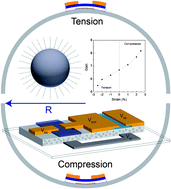Functional high-k nanocomposite dielectrics for flexible transistors and inverters with excellent mechanical properties†
Abstract
The development of high performance flexible electronics requires dielectrics possessing a high dielectric constant and enhanced mechanical stability. In this study, we report on novel


 Please wait while we load your content...
Please wait while we load your content...